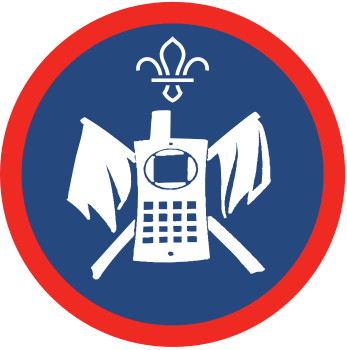Destination oscillation
You’ll need
- Tables
- Chairs
- Wire cutters
- Crocodile clips, optional
- Electronic components for each pair, including: a 9V battery, a DC 9-15V HYD-4218 active piezoelectric alarm buzzer, a 9V filament light with wires and a 9V battery strap with wire leads)
Before you begin
-
Use the safety checklist to help you plan and risk assess your activity. Additional help to carry out your risk assessment, including examples can be found here. Don’t forget to make sure all young people and adults involved in the activity know how to take part safely.
-
Source the components and any other items you need. The necessary components can be found and ordered online or bought from your local electronics shop. Look at the ‘Instructions guide’ to help find the items, as it includes pictures of all the components.
-
Set up the activity space with tables and chairs. Put a set of components, a copy of the ‘Instruction guide’ and a set of wire-cutters together in different spots on each table.
Ready, steady, oscillate!
- Split everyone into small groups or pairs, depending on how many sets of components you have. Have each group sit by their equipment and instructions, and explain how to safely use the cutters provided.
- If you haven’t already done The road to the code activity, explain to the group what Morse code is and how an oscillator can be used to send a message. Everyone should look at the Morse code alphabet on their ‘Instructions guide’ to see which dots and dashes represent which letters and numbers.
- The person leading the activity should work closely with each group to build their oscillators. Everyone should follow the instructions carefully, and each person should pitch in and help to build their group’s device.
You could have the groups take turns to carry out the instructions, such one person doing the first stage, another does the second stage, and so on. - When the oscillators are built, everyone should have some time to practice sending and receiving Morse code messages. They should use information on the ‘Instruction guide’ to help. Each person should think carefully about a message to send that other people won’t be able to easily guess.
You could have the groups take turns to transmit the name of their favorite book, celebrity, holiday destination or subject at school. - Groups should now come up with more detailed messages to send. They should then take turns to transmit the messages to the other groups. The other groups should attempt to work out what the message says, and the first group to do so and read it aloud is the winner.
Reflection
Teamwork, communication and following instructions were all key to building these simple oscillators. Morse code is an important method of communication, but it has some drawbacks.
Where might an oscillator be ineffective when sending a message? Think about different places, scenarios and the symbols in the morse code alphabet that might make it ineffective.
On the other hand, morse code allows us to communicate without speaking. This is great for keeping something secret from those who don’t know the code.
Who else has benefited from communication methods that don’t involve speaking? Think about people with speech and language difficulties and other disabilities.
Safety
All activities must be safely managed. You must complete a thorough risk assessment and take appropriate steps to reduce risk. Use the safety checklist to help you plan and risk assess your activity. Always get approval for the activity, and have suitable supervision and an InTouch process.
- Sharp objects
Teach young people how to use sharp objects safely. Supervise them appropriately throughout. Store all sharp objects securely, out of the reach of young people.
- Electronics
Remove any equipment you’re working on from the power source before you begin. Never assume the power circuit’s off – test it with a voltmeter (and then test it again to be sure). Only connect power to a circuit once you’ve finished working on it and have checked your work. Make sure your circuit isn’t overloaded, and return any covers you’ve removed.
Make sure that all electronics equipment is properly grounded. Use the right electronics tools, and always replace damaged equipment (for example, replace cables rather than repairing them with insulating tape). Always have safety equipment including a fire extinguisher, basic first aid kit, and mobile phone nearby.
- Hand and electric tools
Inspect tools for any damage before each use. An adult should supervise people using tools, and people should follow instructions on how to use them correctly and safely. Tools should be properly maintained and kept sharp.
Use an appropriate surface and make sure materials are stable and supported when you’re working on them. You should cut and drill away from the body and in an area clear of other people. Be extra cautious of trailing cables and water when using electric tools. Always use a cordless tool if one’s available.
Try introducing some sounds in the background or other distractions to make it more difficult for those receiving messages to focus. Try to see if those receiving the messages can fill in the gaps of any letters or symbols that they might have missed to help them to be the first group to read the message aloud and win.
Crocodile clips may make some stages, such as connecting the wires, more manageable for everyone.
Double check that the font on the ‘Instructions guide’ is clear and easy to read. Provide a Braille or larger print version alternative where necessary.
All Scout activities should be inclusive and accessible.
More technically challenging oscillators could be built. Instructions can be found here.
If young people are confident, allow them to decide if they’d like to build a more advanced oscillator.
